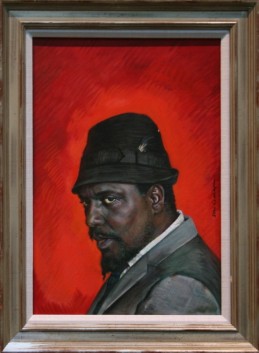
What drew me to Thelonious Monk was the fulfilled promise of what drew me to jazz in the first place: this promise of complexity, of a depth that I wasn’t getting any more from rock.
I mean “complexity” in a nonacademic way — what I enjoyed about Monk was the cryptic nature of his melodies. A song like “Well You Needn’t” made little sense to me the first time around, or the second. I could hear the theme, but it took a small amount of work to understand the song on its own terms.
I loved that. Same with prog rock. Those 5/4 and 13/8 melodies might take a couple of listens to decipher, but once that was accomplished, the music became more rewarding than ordinary pop. (I’ve since learned that pop bands can reward you in this way, too. Devo’s “Clockout” comes to mind.)
Monk was a different type of challenge, and a fun one to conquer.
But as Pitchfork contributor Carvell Wallace argues, in an article published in April, Monk wasn’t writing unusual melodies just to be weird. Well, it’s possible he was; Wallace entertains the thought that Monk is just trolling us. His primary argument, though, is that a sense of identity was at stake, not just for Monk, but for black culture.
Sometimes it seems the entirety of black American music is about this: trying to carve out a space unspoiled by the overbearing whiteness of being. Slave songs were coded messages about escape and freedom. Blues was filled with complex and culturally specific imagery. Jazz expressed an attempt to deconstruct and complicate American band music in a way that captured the violent and frenetic pace of life in northern cities.
Blues and jazz have now been co-opted by the rest of us. Monk’s music is the norm. Likewise, Ornette Coleman still isn’t for everybody, but his compositions show up on some surprisingly mainstream albums.
That’s why innovation in black music shifted to the sphere of hip-hop, Wallace argues. Discussing some pivotal moments of the ’90s, he writes:
These contradictions weren’t just to be weird. They were meant to leave your ass behind. If you didn’t understand how these things worked together, then it was not for you. Every moment of this progression consists of a black artist making something that challenges the norm and tries to give life to the specificity of their experience. Every moment imbues the maker with the power that comes when you create music that is direct, epic, and (most importantly) impossible to understand for people that don’t live it. Doing things wrong is often how black people create their own freedom.
Whatever the “meaning” behind Monk’s crooked sense of melody, it’s produced a rich body of work that’s now a staple of jazz music and a cornerstone of American art. Monk is the mainstream.
I feel a little bit bad about that, but I’m not sure that I should. This is progress. This is the world expanding its horizons. Monk might have been writing for himself, or to pave his own sense of culture, or just to have a laugh on white people. No matter his motivations, he produced music that stretched minds in new directions. We’re glad for that.
Meanwhile, the artists striving for their own sense of identity have been pushed into new forms and new directions. In a perverse way, that’s the gift we give back.